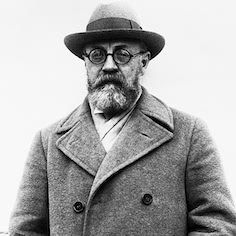Matisse & Picasso: Rivalry or Healthy Competition?
- Krista Swisher
- Mar 20, 2022
- 2 min read
Updated: Mar 3
As mentioned in my recent public blog on my website, this Patron article is the first of three discussions from the great book by Sebastian Smee, The Art of Rivalry: Four Friendships, Betrayals, and Breakthroughs in Modern Art. The subject of this month’s article is Henri Matisse and Pablo Picasso. Both artists are the subjects of numerous YouTube videos and, if you have Amazon Prime, I highly recommend Antonio Banderas’ portrayal of Picasso in Genius: Picasso.

On the surface, you could not find two more different men. Matisse was born in France on New Year’s Eve 1869; Picasso was born in Spain in October 1881. Matisse didn’t begin “the art game” as a painter until he was nearly 20 years old; Picasso literally had art in his blood with his father being an art teacher. Pablo’s first word is rumored to have been the Spanish word for ‘pencil.' Matisse went through many years of family scandal and lack of family support for his art until the early 1900s; Picasso had unconditional support and love from his family to the point it laid early ground for his famous (or infamous) ego throughout his life. Matisse cared what people thought about his art…to a point but was more secure and calm in sticking to his intuitions. Picasso cared…well…not quite so much about what people thought because he was confident and sure of himself in his abilities.

While Matisse and Picasso absolutely kept an eye on each other’s developments as artists and kept track of each other’s current work, these two men found qualities and abilities in each other they admired and that helped their careers. There was absolutely a healthy sense of competition, but the main idea of any sort of rivalry was ginned up and perpetuated by the Stein family…specifically Leo & Gertrude Stein. Again, do a standard Google or YouTube search for the importance of the Steins in turn-of-the-century art. Both were in the beginning solidly in the Matisse camp. Matisse was turning the art world on its ear by his bold use of color, and Leo bought early Matisse works that were being attacked by the art establishment. Gertrude began to take notice of Picasso’s work during his “blue period.” She found the works intriguing while most other people found them depressing. At Picasso’s first introduction to her, he immediately offered to paint her portrait – which he did…eventually. When Gertrude asked Matisse to paint her portrait, he declined. That refusal began any public notations of a “rivalry” – again ginned up and perpetuated by Gertrude Stein. While Leo Stein and his family largely kept to the Matisse camp, Gertrude began to gravitate to Picasso.
Both Matisse and Picasso stayed in France and created art during the WWII Nazi occupation; the gestapo regularly stopped by Picasso’s studio and home in Paris to search for “degenerate art.” While Matisse didn’t have gestapo visits to worry about in the south of France, his wife and daughter worked for the French resistance, and both were captured; his daughter nearly died during torture and questioning. After the war, the years of friendship and artistic “rivalry” went on until Henri Matisse’s death on November 3, 1954 in Nice, France. Picasso died on April 8, 1973 in Mougins, France.




Comments